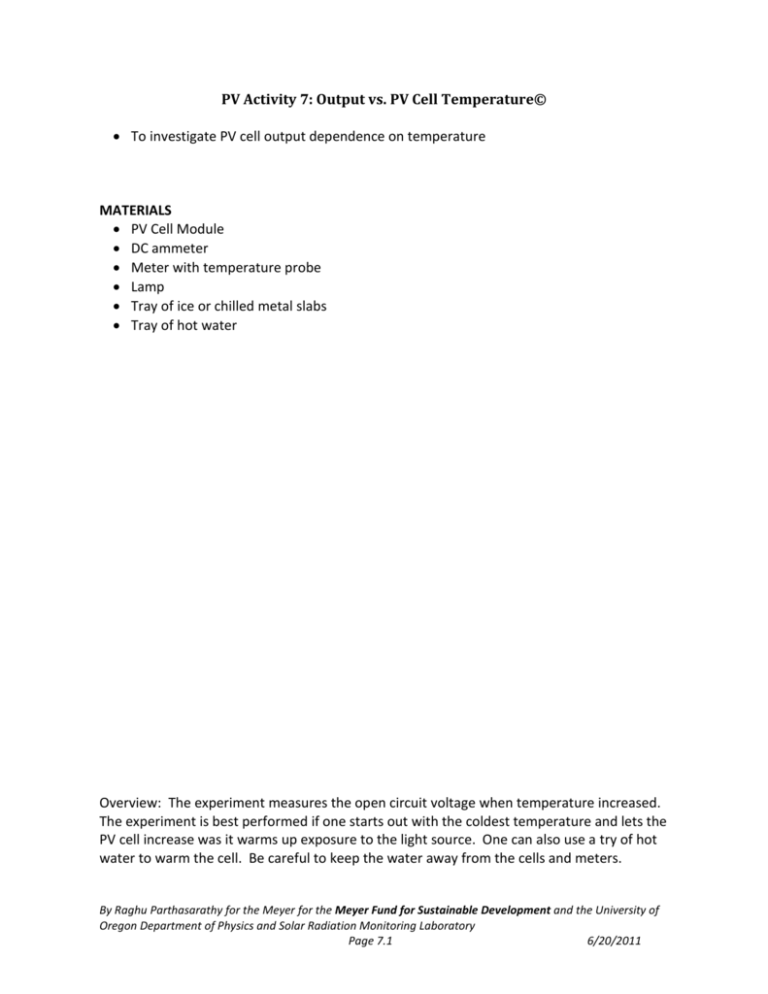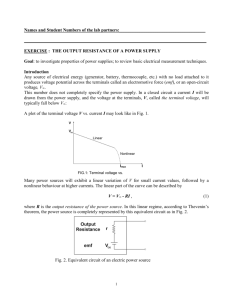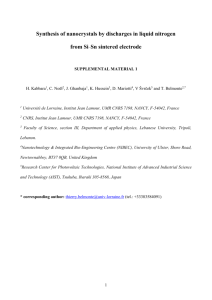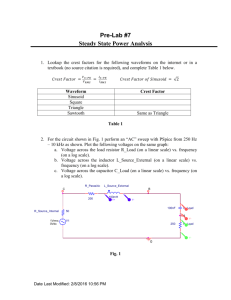Appendix : Other Possible Measurements:
advertisement

PV Activity 7: Output vs. PV Cell Temperature© To investigate PV cell output dependence on temperature MATERIALS PV Cell Module DC ammeter Meter with temperature probe Lamp Tray of ice or chilled metal slabs Tray of hot water Overview: The experiment measures the open circuit voltage when temperature increased. The experiment is best performed if one starts out with the coldest temperature and lets the PV cell increase was it warms up exposure to the light source. One can also use a try of hot water to warm the cell. Be careful to keep the water away from the cells and meters. By Raghu Parthasarathy for the Meyer for the Meyer Fund for Sustainable Development and the University of Oregon Department of Physics and Solar Radiation Monitoring Laboratory Page 7.1 6/20/2011 Name:_______________________________________ Kit #___________ Per.__________ Photovoltaic Performance and Temperature Temperature is one of many factors that influence the performance of photovoltaic cells. In this exercise examines the voltage supplied by photovoltaic cells at various temperatures. (Temperature affects current as well as voltage, but to a much lesser extent.) Photovoltaic Voltage Measure the (open-circuit) voltage of the photovoltaic cell at various temperatures. 1. Connect the PV cell to the volt meter as shown in Fig. 7.1. The red terminal on the module (+) should be connected to the VmA terminal on the meter. The black terminal on the module (-) should measure connected to the COM terminal of the meter. Fig. 7.1: Cell connected to open circuit voltage. 2. Use a tray of ice or cooled metal slabs to cool the cells. Use a tray of hot water or sunlight to warm the cells. You’ll need to compare the cells’ response at various temperatures under identical illumination conditions, e.g. the same orientation relative to sunlight or the same distance from a table lamp. You should examine at least four temperatures, including one that is cooler than room temperature. You may need to use a temperature probe with the multimeter to measure the cooler temperature, since it may be below the range of the liquid crystal thermometer mounted in the PV Module. Temperature (C) Voltage (V) Make a graph of voltage versus temperature. From your graph, describe what happens to the energy output power of the solar cell as temperature increases. Describe your findings: PV Activity 7: Output vs. Cell Temperature Page 7.2 Name:_______________________________________ Kit #___________ Per.__________ Instructor’s Note: Voltage decreases as temperature goes up due to the thermal motion within the PV cell (see Fig. 7.2). The thermal motion increases the probability of electron hole pairs to recombine within the cell. Therefore there will be less electrical charges available to flow from the cell. Sample data is shown in the graphs (Figures 7.2 to 7.4). The fact that current goes up a bit does not lend itself to a simple explanation ( see Fig. 7.3). A shown in Fig. 7.4, even though the current does go up, the overall power does decrease as the temperature goes up which is the point of this experiment. This shows that as a PV cell get hotter, the efficiency goes down. In applications, some arrays are cooled with water so the cells will be more efficient and the heated water could be used for some purpose. One would have to do research to see if it is economically worth the effort. Fig 7.3: Plot of short circuit current verses temperature of a PV cell Fig 7.2: Plot of open circuit voltage verses temperature of a PV cell Fig 7.4: Plot of power verses temperature of a PV cell PV Activity 7: Output vs. Cell Temperature Page 7.3











